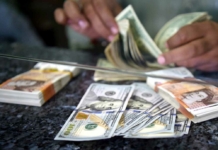According to a report by The News, the rupee is expected to face pressure in the open market next week due to a shortage of the dollar. However, it is anticipated to trade within a specific range in the interbank market due to administrative measures regulating rates. In the past week, the local currency experienced fluctuations, dropping to 287.15 per dollar on Tuesday but recovering to 285.15 by the end of the week.
Pakistan’s economic situation is deteriorating, with diminishing foreign exchange reserves and an increasing risk of default. Despite the country’s desperate attempts to resume the stalled $6.5 billion bailout with the International Monetary Fund (IMF), the chances of success are diminishing daily, primarily because the current program is set to conclude on June 30.
A forex trader mentioned that due to import restrictions, the demand for dollars from importers is expected to remain steady. In the interbank market, it is unlikely that the rupee will exceed the 288 level against the dollar in the coming week. However, in the open market, the rupee is appearing weaker due to a scarcity of dollars and heightened demand, as per the trader.
On Friday, the rupee reached a record low of 310 against the dollar in the open market, reflecting a decrease of Rs5 during the past week. The exchange rate difference between the open and interbank markets widened to around Rs25, which could lead overseas Pakistani workers to resort to illegal means to send money home.
Pakistan’s foreign exchange reserves, a crucial indicator of economic health, fell by $206 million to $9.7 billion in the week ending May 19. The State Bank of Pakistan’s reserves declined by $119 million to $4.2 billion. Notably, commercial banks’ reserves also dropped by $88 million to $5.5 billion, indicating an outflow of wealth.
Tresmark, in a weekly note, stated that while the interbank market appears to be range-bound, grey market rates are likely to rise further as a significant portion of non-formal imports is settled through that market. The note also highlighted the political turmoil and its impact on the economy, emphasizing the need to reduce political tension. It predicted that inflation (CPI) for May is expected to reach approximately 39% but will start easing off thereafter due to the high base effect and the softening of global commodities.
Finance Minister Ishaq Dar had a second meeting in two months with US Ambassador Donald Bloom to exert influence on the IMF. Dar reassured that Pakistan would not default. The country is facing a substantial debt repayment of $2.3 billion in June, and while it is relying on China’s assistance to roll over the debt, analysts anticipate that a portion of the debt will still need to be repaid and will be received back in a few days or weeks.







